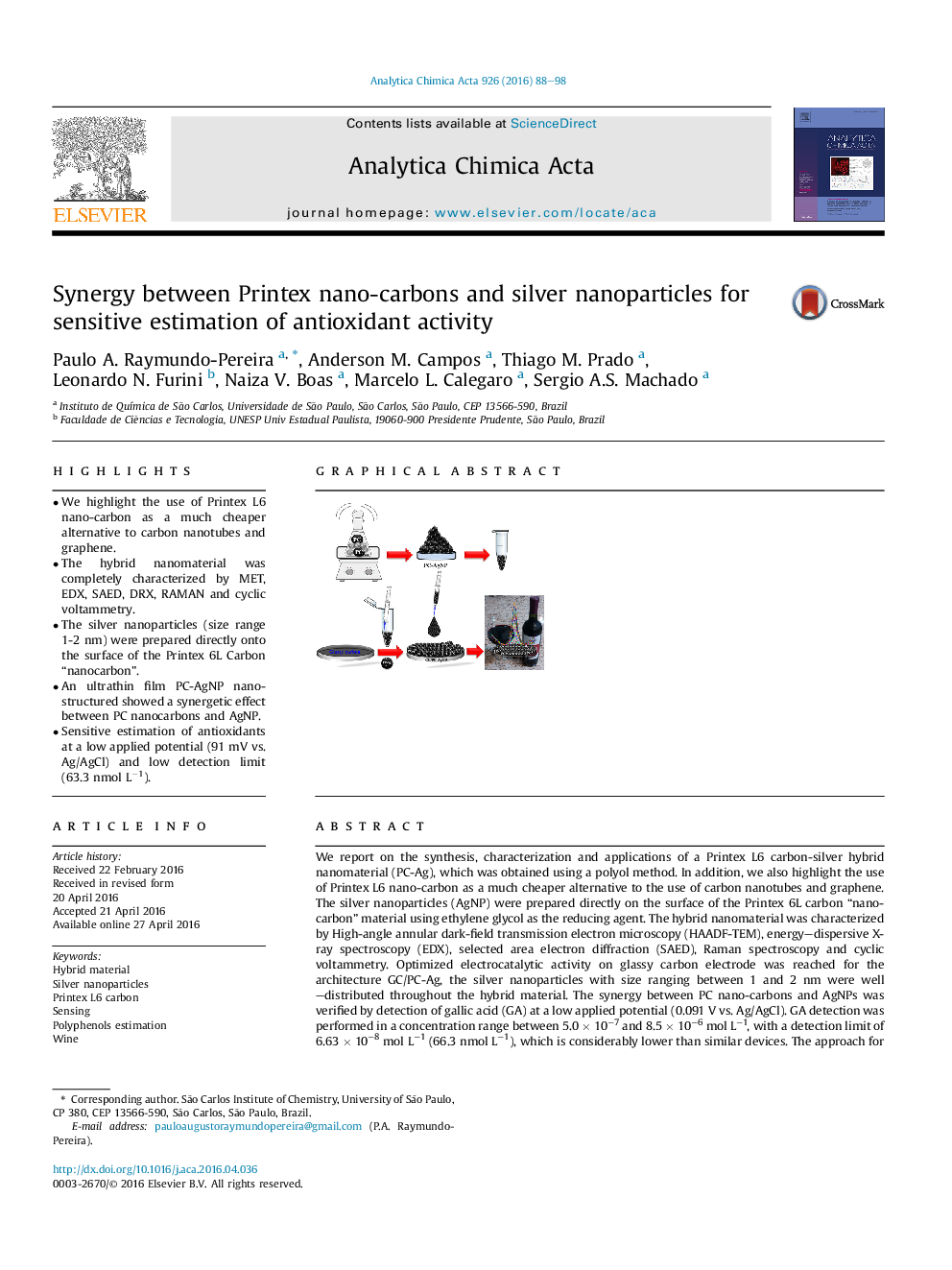| کد مقاله | کد نشریه | سال انتشار | مقاله انگلیسی | نسخه تمام متن |
|---|---|---|---|---|
| 1162893 | 1490906 | 2016 | 11 صفحه PDF | دانلود رایگان |
• We highlight the use of Printex L6 nano-carbon as a much cheaper alternative to carbon nanotubes and graphene.
• The hybrid nanomaterial was completely characterized by MET, EDX, SAED, DRX, RAMAN and cyclic voltammetry.
• The silver nanoparticles (size range 1-2 nm) were prepared directly onto the surface of the Printex 6L Carbon “nanocarbon”.
• An ultrathin film PC-AgNP nanostructured showed a synergetic effect between PC nanocarbons and AgNP.
• Sensitive estimation of antioxidants at a low applied potential (91 mV vs. Ag/AgCl) and low detection limit (63.3 nmol L−1).
We report on the synthesis, characterization and applications of a Printex L6 carbon-silver hybrid nanomaterial (PC-Ag), which was obtained using a polyol method. In addition, we also highlight the use of Printex L6 nano-carbon as a much cheaper alternative to the use of carbon nanotubes and graphene. The silver nanoparticles (AgNP) were prepared directly on the surface of the Printex 6L carbon “nanocarbon” material using ethylene glycol as the reducing agent. The hybrid nanomaterial was characterized by High-angle annular dark-field transmission electron microscopy (HAADF-TEM), energy–dispersive X-ray spectroscopy (EDX), selected area electron diffraction (SAED), Raman spectroscopy and cyclic voltammetry. Optimized electrocatalytic activity on glassy carbon electrode was reached for the architecture GC/PC-Ag, the silver nanoparticles with size ranging between 1 and 2 nm were well–distributed throughout the hybrid material. The synergy between PC nano-carbons and AgNPs was verified by detection of gallic acid (GA) at a low applied potential (0.091 V vs. Ag/AgCl). GA detection was performed in a concentration range between 5.0 × 10−7 and 8.5 × 10−6 mol L−1, with a detection limit of 6.63 × 10−8 mol L−1 (66.3 nmol L−1), which is considerably lower than similar devices. The approach for fabricating the reproducible GC/PC-Ag electrodes is entirely generic and may be explored for other types of (bio)sensors and devices.
Figure optionsDownload as PowerPoint slide
Journal: Analytica Chimica Acta - Volume 926, 5 July 2016, Pages 88–98
